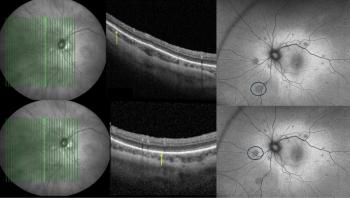
Do retina transplants represent the future of retinal degeneration treatment?
Transplants of foetal retinal cells are an effective treatment for retinal degeneration involving the destruction of photoreceptor cells, according to a report published in the August 2008 issue of the American Journal of Ophthalmology.
Transplants of foetal retinal cells are an effective treatment for retinal degeneration involving the destruction of photoreceptor cells, according to a report published in the August 2008 issue of the American Journal of Ophthalmology.
Norman D. Radtke, MD, PSC of the University of Louisville, Kentucky, US and colleagues transplanted human foetal retinal cells (with retinal pigment epithelium) into six subjects with retinitis pigmentosa (RP) and into four subjects with dry age-related macular degeneration (AMD). No subjects, even those with immunological mismatches between donor and recipient, rejected the transplanted cells.
Seven (RP, n=3; AMD, n=4) of the 10 subjects registered significant objective visual improvement, although all remained within the “legally blind” range. One RP patient, who was treated in one eye only, maintained visual improvement and demonstrated a 27% improvement in light sensitivity in the treated eye at six years, while the untreated eye continued to deteriorate. Nevertheless, two subjects demonstrated visual improvement in untreated eyes.
Although the results of this Phase II trial have been positive, researchers acknowledge that more research must be conducted to establish if these transplants are viable as a therapy for vision improvement in eyes with these degenerative diseases of the retina.
Newsletter
Get the essential updates shaping the future of pharma manufacturing and compliance—subscribe today to Pharmaceutical Technology and never miss a breakthrough.













































